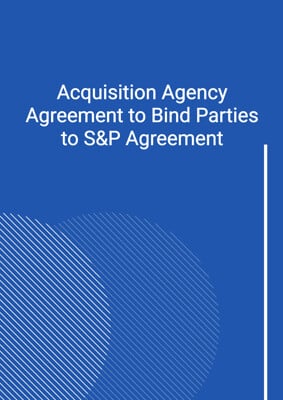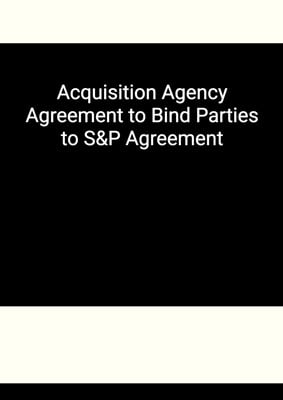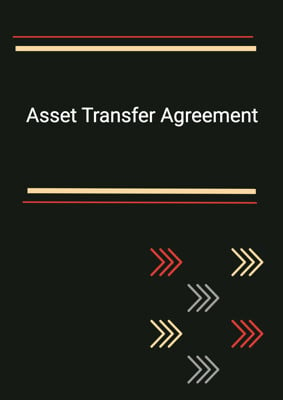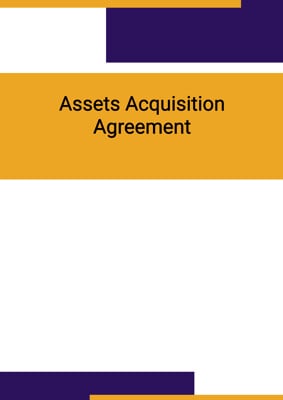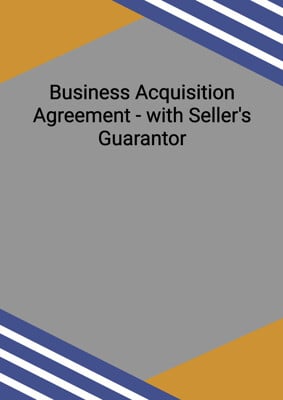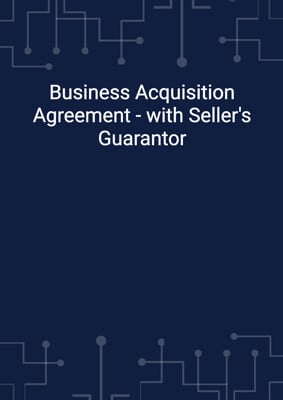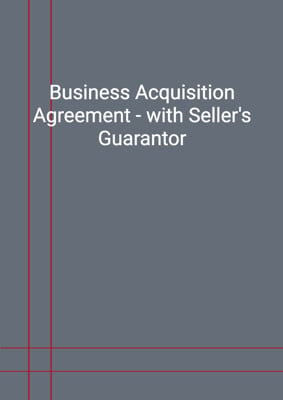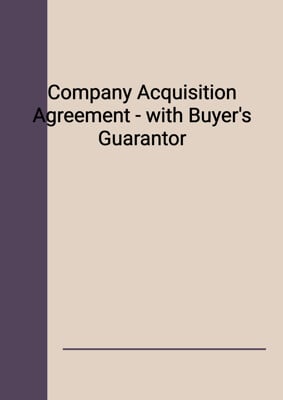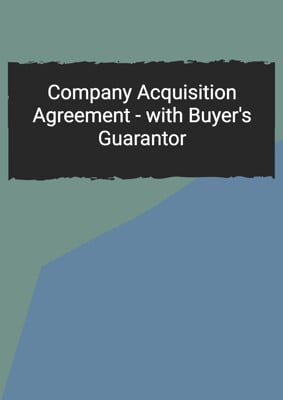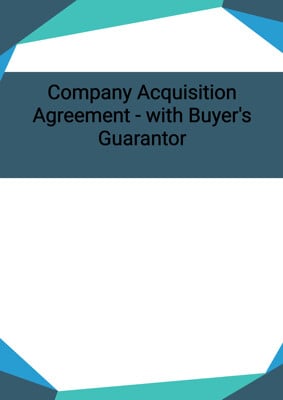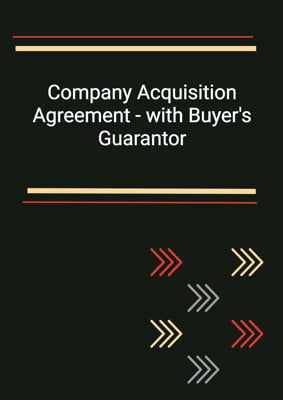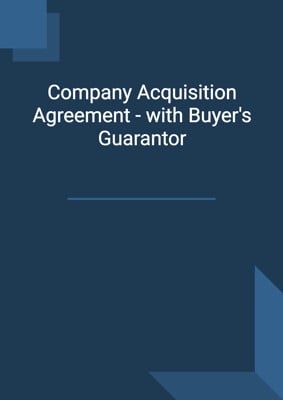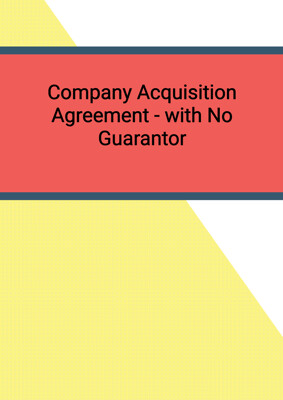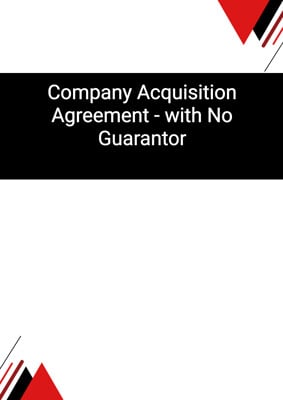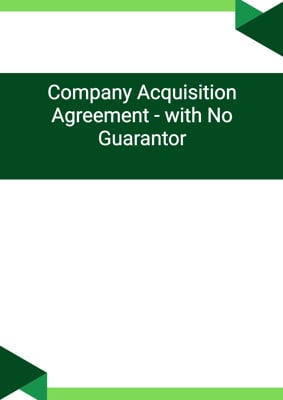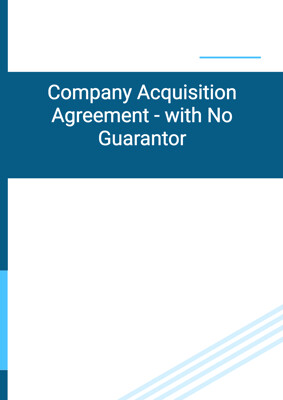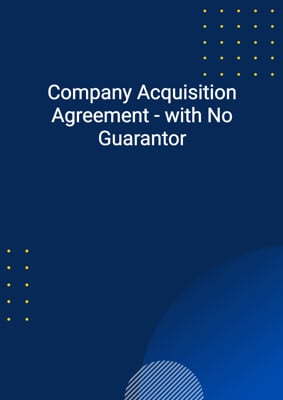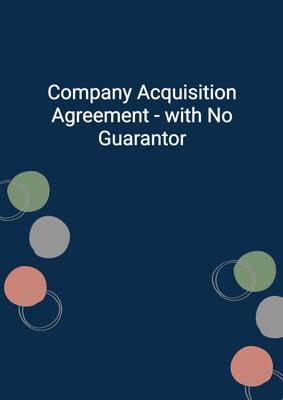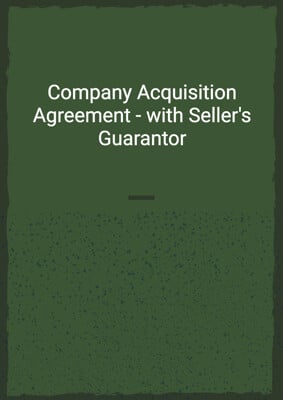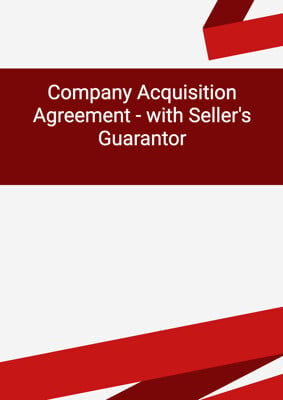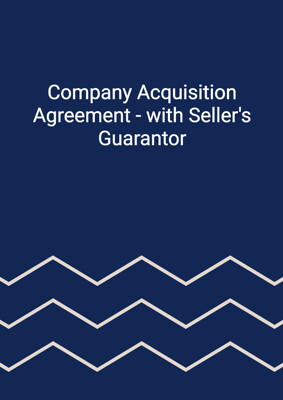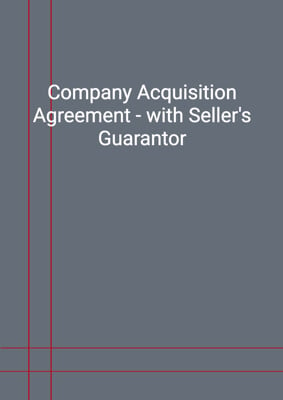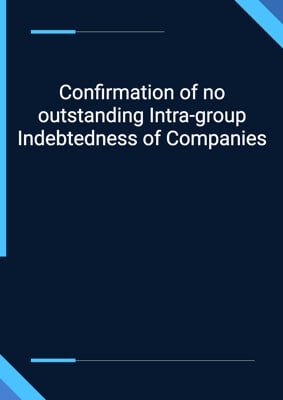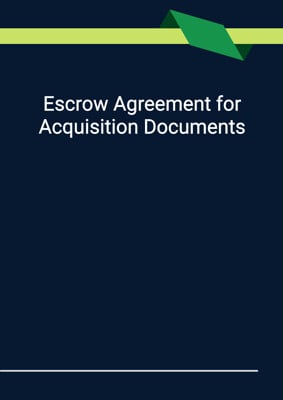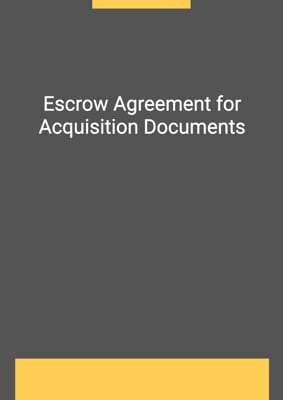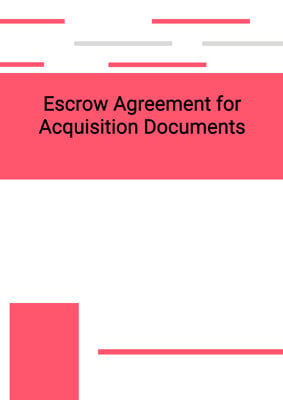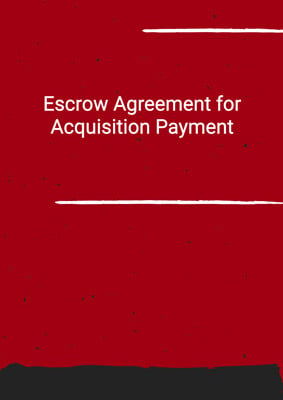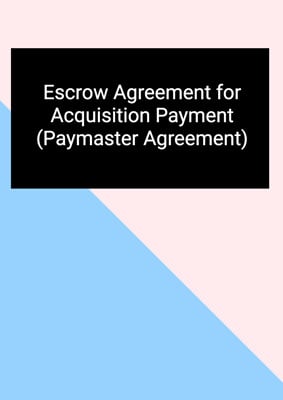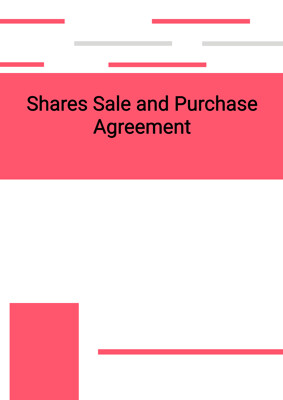How to Tailor the Document for Your Need?
01
Create Document
Fill in the details of the parties. You can click the "Fill with Member’s Information" button to complete it with information saved to your account.
02
Fill Information
Please fill in any additional information by following the step-by-step guide on the left hand side of the preview document and click the "Next" button.
03
Get Document
When you are done, click the "Get Document" button and you can download the document in Word or PDF format.
04
Review Document
Please get all parties to review the document carefully and make any final modifications to ensure that the details are correct before signing the document.
Document Preview
Document Description
The Company Acquisition Agreement - with No Guarantor is a legally binding document that outlines the terms and conditions for the acquisition of a private company limited by shares. The agreement is entered into between the seller, who is the sole legal and beneficial owner of the share capital of the company, and the buyer, who agrees to purchase all of the issued share capital of the company.
The agreement begins with an interpretation section, which defines the key terms used throughout the document. It also includes a schedule for the interpretation of the agreement.
The agreement then proceeds to outline the sale of the shares and the price. The seller agrees to sell, and the buyer agrees to purchase, the number of shares specified in the agreement. The agreement specifies the total price payable by the buyer to the seller for the shares, which can be a fixed amount paid in cash, a fixed amount paid in shares, or a fixed amount for goodwill and business intellectual property rights (IPR), plus the book value of the tangible assets.
The completion of the sale and purchase of the shares is conditional upon certain conditions being fulfilled. These conditions include the passing of resolutions by the shareholders of both the seller and the buyer approving the transactions contemplated by the agreement. The agreement also includes provisions for the repayment of any outstanding intra-group indebtedness and the consultation and notification of the buyer regarding any matters that may have a material effect on the business.
The completion of the sale and purchase is followed by pre-completion undertakings, which outline the obligations of the seller pending completion. These include conducting the business in the ordinary and usual course, preserving and protecting the business assets, allowing the buyer's representatives access to the books and records of the company, and making prompt disclosure of any relevant information.
The agreement then sets out the process for completion, including the delivery of transfers and share certificates, the resignation of auditors and directors, and the adoption of articles of association. It also includes provisions for the payment of the purchase price and the determination of the net tangible assets.
Following completion, the agreement includes post-completion undertakings, which outline the obligations of both the seller and the buyer. These include the repayment of connected trading indebtedness, the change of name of any group company with a similar name, and the cessation of the use or display of any trade or service marks, trade or service names, or logos.
The agreement also includes restrictions on the seller, including non-competition and non-solicitation provisions, as well as provisions for the protection of intellectual property rights and the limitations on claims.
The agreement concludes with provisions for the payment of withholding tax and grossing up, the entire agreement, variation, assignment, announcements, costs, severability, no rights of third parties, governing law and jurisdiction, notices and service, waivers/buyer's rights and remedies, and the pension scheme (if applicable).
How to use this document?
1. Provide information: Enter the names and addresses of the seller and the buyer, as well as the principal place of business for each party. This ensures that both parties are clearly identified.
2. Specify the sale and price: Clearly state the number of shares to be sold and purchased, as well as the agreed price for the shares. This ensures that both parties are aware of the terms of the sale.
3. Fulfill conditions to completion: Ensure that all conditions specified in the agreement, such as shareholder resolutions and consents, are fulfilled before completing the sale and purchase of the shares.
4. Complete pre-completion undertakings: Before completion, the seller should conduct the business in the ordinary and usual course, preserve and protect the business assets, and make necessary disclosures to the buyer. This ensures a smooth transition of ownership.
5. Complete the sale and purchase: On the completion date, deliver the necessary documents, such as transfers and share certificates, and make the required payments. This finalizes the sale and purchase of the shares.
6. Fulfill post-completion undertakings: After completion, ensure that any outstanding obligations, such as repayment of indebtedness and cessation of use of trademarks, are fulfilled. This ensures compliance with the agreement.
7. Comply with restrictions on the seller: Adhere to the non-competition and non-solicitation provisions, as well as the protection of intellectual property rights. This prevents any potential conflicts of interest.
8. Limitations on claims: Be aware of the limitations on claims, including the time limits for notifying and making claims for breaches of warranties. This protects the parties from potential disputes.
9. Comply with tax obligations: Ensure that any required deductions or withholdings are made and that the necessary additional amounts are paid to comply with tax laws. This avoids any potential tax liabilities.
10. Follow the agreed-upon procedures: Adhere to the agreed-upon accounting policies, methods, and procedures for preparing the completion accounts. This ensures accuracy and consistency in financial reporting.
11. Seek legal advice if needed: If there are any uncertainties or complexities in the agreement, consult with legal professionals to ensure compliance and understanding of the terms and obligations.
Not the right document?
Don’t worry, we have thousands of documents for you to choose from:


